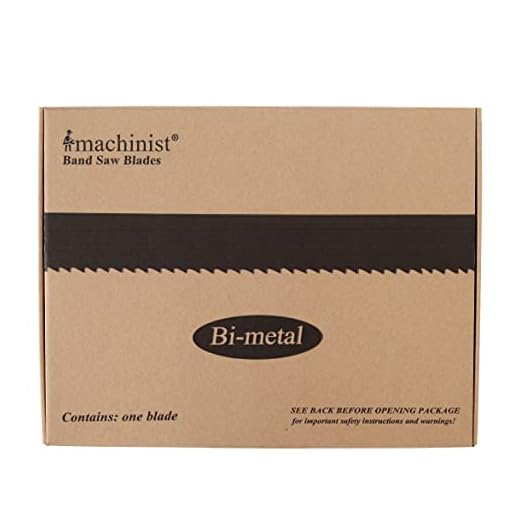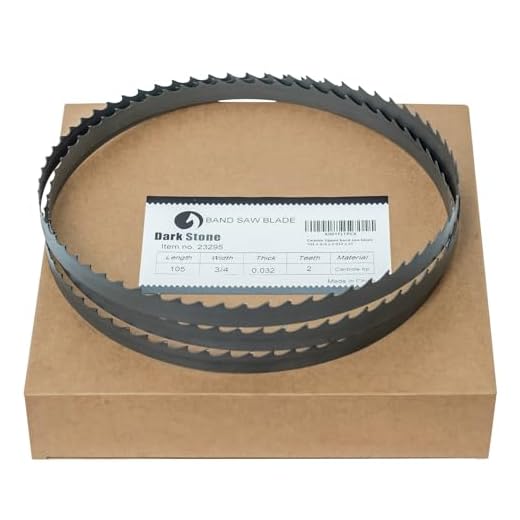


Choosing the right band saw blade for cutting metal is crucial for achieving accurate and clean cuts. Whether you are a professional metalworker or a DIY enthusiast, using the correct blade will make a significant difference in the quality of your work.
When it comes to cutting metal, there are several factors to consider. One of the most important factors is the type of metal you will be cutting. Different metals have different hardness levels and require specific types of blades to achieve optimal results. For example, a blade designed for cutting stainless steel may not be suitable for cutting aluminum.
Another crucial consideration is the thickness of the metal you will be cutting. Thicker metals require a blade with a lower tooth count to ensure efficient cutting. On the other hand, thin metals require a blade with a higher tooth count to prevent the blade from getting stuck and producing rough cuts.
The blade material is also an important factor to consider. High-speed steel (HSS) blades are a popular choice due to their durability and ability to cut through a wide range of metals. Carbide-tipped blades, on the other hand, are incredibly hard and are ideal for cutting hardened steel and other tough metals.
In addition to the blade material, the blade’s tooth configuration plays a significant role in metal cutting. Regular tooth blades are suitable for general-purpose cutting, while skip tooth blades are ideal for cutting softer metals. Hook tooth blades are designed for fast and aggressive cutting, making them suitable for thicker metals.
By considering the type and thickness of the metal, the blade material, and the tooth configuration, you can select the right band saw blade for cutting metal, ensuring precise and efficient cuts for all your metalworking projects.
The importance of choosing the right band saw blade for metal cutting
When it comes to cutting metal, having the right band saw blade is crucial. Whether you are working with steel, aluminum, or other types of metal, using the correct blade can make a significant difference in the quality of the cut and the efficiency of your work.
One of the main reasons to choose the right band saw blade for metal cutting is to ensure precision. Each type of metal has its own unique properties, which can include hardness, thickness, and composition. Using a blade that is specifically designed for cutting metal will provide a cleaner and more accurate cut, reducing the need for additional finishing work or modifications.
Another benefit of using the right blade is improved efficiency. A blade that is designed for cutting metal will have the necessary tooth geometry and pitch to effectively cut through the material. This can result in faster cutting speeds and reduced downtime, ultimately increasing your productivity.
Choosing the wrong blade can not only result in poor quality cuts but can also lead to blade damage. If you use a blade that is not designed for cutting metal, it can quickly become dull or even break during the cutting process. This can be not only costly in terms of blade replacement but also dangerous for operators. Using the right blade can help prolong its lifespan and prevent unnecessary accidents.
It is important to consider the specific type of metal you will be cutting and the thickness of the material. Different blades have varying tooth configurations, which can affect their performance. For example, a blade with a finer tooth pitch may be more suitable for thinner materials, while a blade with a coarser tooth pitch may be better for thicker metals.
In conclusion, choosing the right band saw blade for metal cutting is essential for precision, efficiency, and safety. Investing in high-quality blades that are specifically designed for cutting metal will not only improve the quality of your cuts but also increase productivity and save costs in the long run. Taking the time to select the appropriate blade for the job at hand will lead to better results and a smoother overall cutting experience.
Understanding the different types of band saw blades
When it comes to cutting metal with a band saw, having the right blade is crucial. There are several different types of band saw blades, each designed for specific applications and materials. Understanding the characteristics and uses of these blades can help you choose the right one for your needs.
1. Carbon Steel Blades
Carbon steel blades are the most common type of band saw blades. They are versatile and can cut through a variety of materials, including wood, plastic, and soft metals. However, they are not suitable for cutting harder metals, as they can wear out quickly.
2. Bi-Metal Blades
Bi-metal blades are made from two different types of materials – a hardened high-speed steel edge and a flexible spring steel back. This combination allows them to cut through a wide range of materials, including hard metals like stainless steel and cast iron. They are durable and long-lasting, making them a popular choice for industrial applications.
3. Carbide-Tipped Blades
Carbide-tipped blades are the most durable and long-lasting type of band saw blades. They feature small carbide teeth that are welded to a high-speed steel body, making them extremely resistant to wear and tear. These blades are ideal for cutting hard metals, such as titanium and hardened steel. However, they are more expensive than other types of blades.
It’s important to consider factors such as the type of material you’ll be cutting, the thickness of the material, and the desired finish when choosing a band saw blade. By understanding the different types of blades and their uses, you can ensure that you have the right tool for the job.
Tips for selecting the best band saw blade for cutting metal
When it comes to cutting metal, choosing the right band saw blade is crucial for achieving clean and precise cuts. Here are some tips to help you select the best blade for your metal cutting needs:
1. Consider the metal type
Different metals have different cutting characteristics, so it’s important to choose a blade that is specifically designed for the type of metal you will be cutting. For example, bi-metal blades are ideal for cutting stainless steel, while carbide-tipped blades work well for cutting hardened steel. Take into account the thickness and hardness of the metal as well.
2. Determine the required tooth pitch
The tooth pitch refers to the number of teeth per inch on the blade. For cutting thin metal sheets, a blade with a higher tooth count is recommended to achieve smoother cuts. On the other hand, cutting thick metal requires a blade with a lower tooth count to remove material more efficiently. Consider the thickness of the metal and the desired cut quality when selecting the tooth pitch.
3. Choose the right blade width
The width of the blade also plays a significant role in metal cutting performance. A wider blade provides stability and reduces vibrations, resulting in straighter cuts. However, a narrower blade allows for tighter curves and intricate cuts. Consider the nature of your metal cutting projects and choose a blade width that suits your specific needs.
Remember to regularly inspect and maintain your band saw blade to ensure optimal performance. A sharp and properly tensioned blade will not only deliver better results but also extend its lifespan. Keep these tips in mind when selecting a band saw blade for cutting metal, and you’ll be well on your way to achieving precise and efficient cuts.






